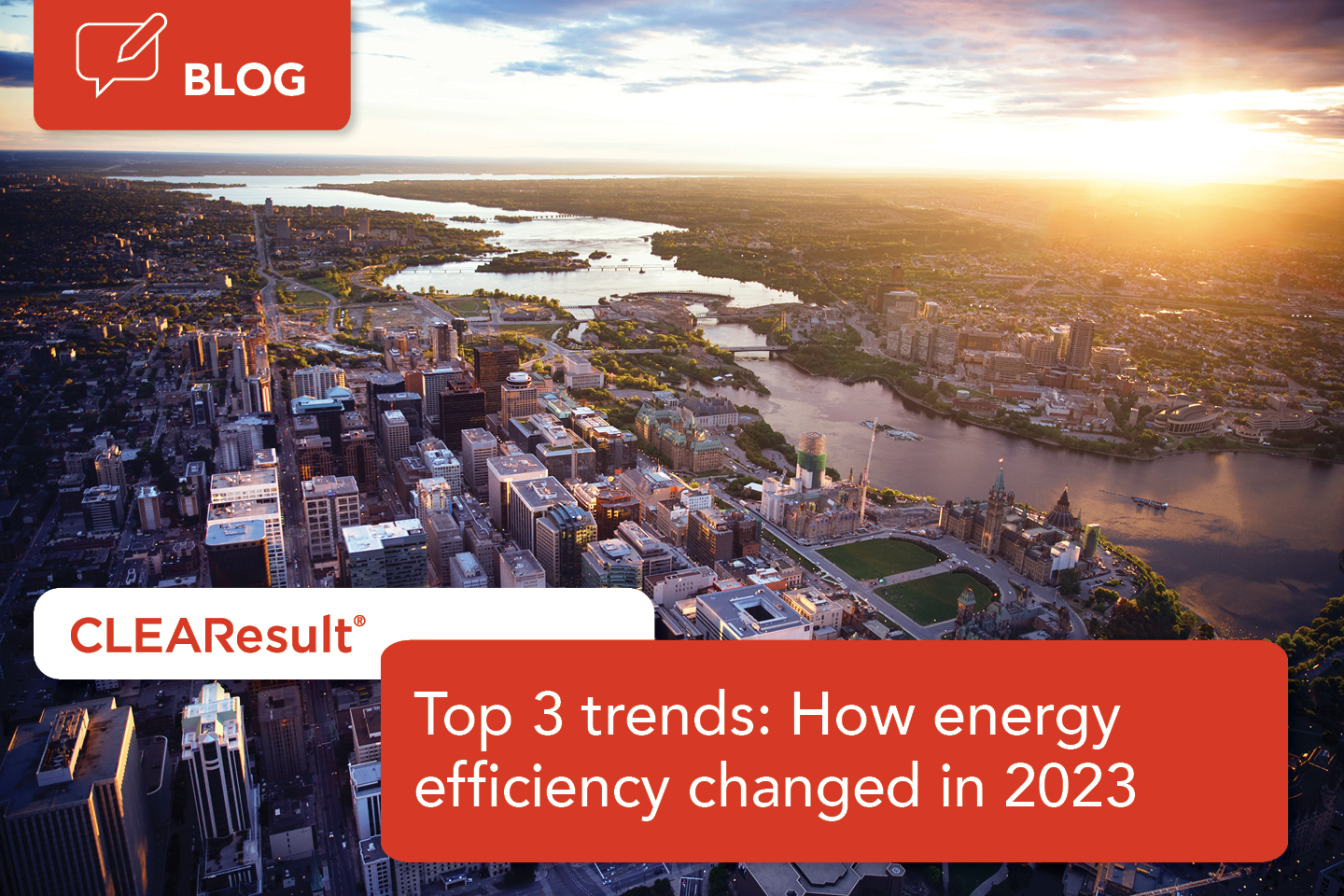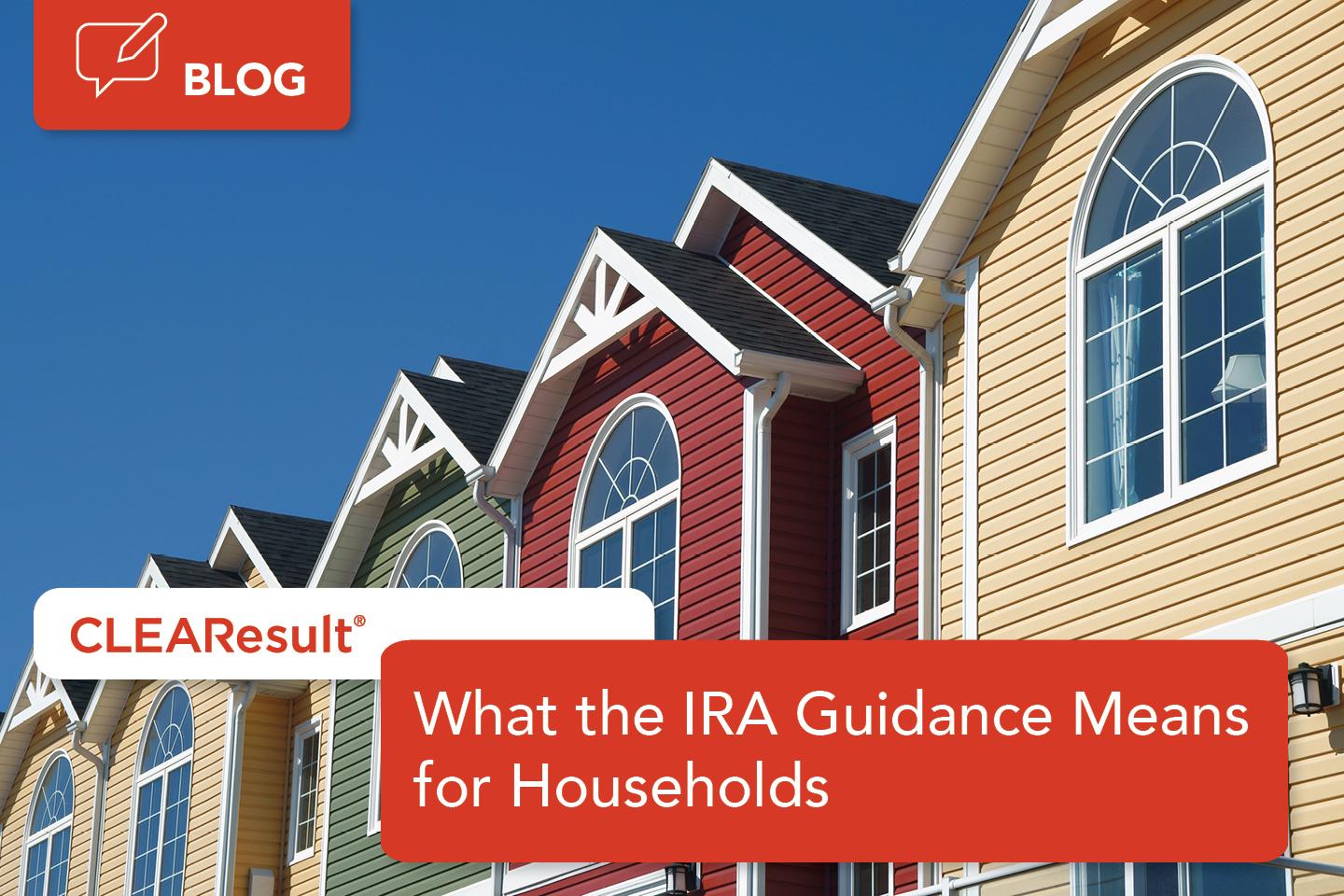The Inflation Reduction Act builds upon the strength of our energy efficiency ecosystem and accelerates all our goals. We’ll see a true transformation in the way people use energy, and everyone will benefit. Read our latest insights to get prepared with us.
 Q&A: How Tennessee is preparing for successful Inflation Reduction Act programs
Q&A: How Tennessee is preparing for successful Inflation Reduction Act programs Strategies and solutions for Solar for All awardees
Strategies and solutions for Solar for All awardees Updates on Inflation Reduction Act Home Energy Rebates (January 2024)
Updates on Inflation Reduction Act Home Energy Rebates (January 2024) CLEAResult Launches Essential Technology Toolkit for Delivering Inflation Reduction Act (IRA) Programs with Ease
CLEAResult Launches Essential Technology Toolkit for Delivering Inflation Reduction Act (IRA) Programs with Ease Top 3 trends: How energy efficiency changed in 2023
Top 3 trends: How energy efficiency changed in 2023 IRA: It’s time to change the world
IRA: It’s time to change the world Lessons learned at the 2023 CLEAResult Energy Forum Inflation Reduction Act keynote panel
Lessons learned at the 2023 CLEAResult Energy Forum Inflation Reduction Act keynote panel More home energy rebates are on the way. Here’s what the Inflation Reduction Act guidelines mean for you.
More home energy rebates are on the way. Here’s what the Inflation Reduction Act guidelines mean for you. What states and utilities need to know about the new IRA program guidance
What states and utilities need to know about the new IRA program guidance Top 4 Takeaways from the 2023 CLEAResult Energy Forum Conference
Top 4 Takeaways from the 2023 CLEAResult Energy Forum Conference How much different households may save with Inflation Reduction Act rebates
How much different households may save with Inflation Reduction Act rebates Why utility and state collaboration is key to making the Inflation Reduction Act work
Why utility and state collaboration is key to making the Inflation Reduction Act work Understanding the High-Efficiency Electric Home Rebate Act (HEEHRA)
Understanding the High-Efficiency Electric Home Rebate Act (HEEHRA) What 2009’s ARRA funding can teach us about the Inflation Reduction Act
What 2009’s ARRA funding can teach us about the Inflation Reduction Act CLEAResult ATLAS™ Qualify brings automation to income-verification for energy efficiency programs
CLEAResult ATLAS™ Qualify brings automation to income-verification for energy efficiency programs Watch our full webinar, The Impact of Energy Efficiency in Decarbonization.
Watch our full webinar, The Impact of Energy Efficiency in Decarbonization. Top 5 takeaways of the Inflation Reduction Act (IRA)
Top 5 takeaways of the Inflation Reduction Act (IRA) The Inflation Reduction Act: An optimistic outlook for the next 10 years
The Inflation Reduction Act: An optimistic outlook for the next 10 years- Workforce Development: Lessons learned from our webinar
 Inflation Reduction Act provides unprecedented opportunity for state energy offices
Inflation Reduction Act provides unprecedented opportunity for state energy offices Our full workforce development webinar is now available online
Our full workforce development webinar is now available online
This landmark piece of legislation will help every American lead a greener, cleaner life. Here are some of its history-making highlights:
- Our largest investment yet—the IRA aims to cut U.S. carbon emissions by 40% by 2030.
- Everyone can benefit, especially low-and-moderate income customers.
- 10-year tax credits will help fund the decarbonization of American energy.
- Home energy rebates (1) will help people reduce energy use and costs with efficiency upgrades.
- Home Electrification and Appliance Rebates Programs (2) will help income-qualified households save on high-efficiency electric appliances and more.
Wondering how the Inflation Reduction Act will impact you? The most exciting parts are in the details. Learn more about how this historic piece of legislation will help Americans everywhere lead a greener, cleaner life.